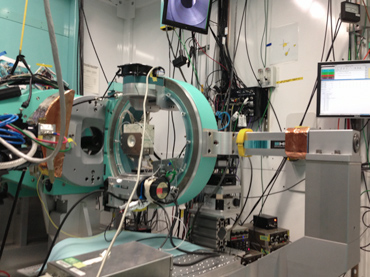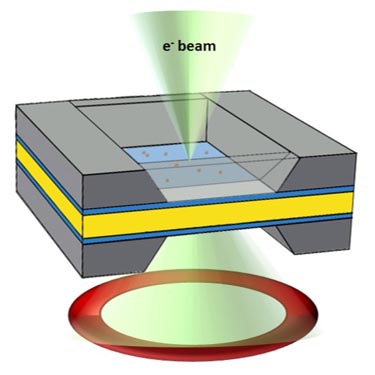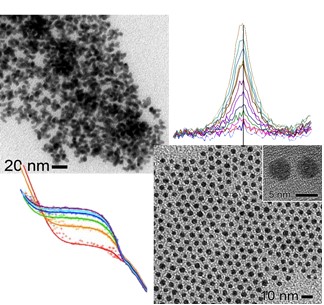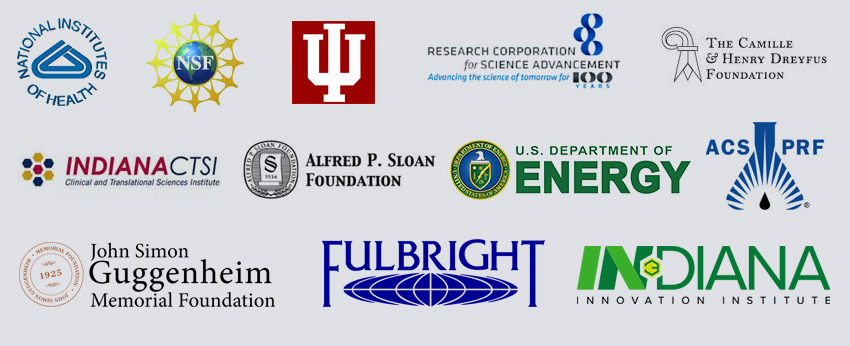Monitoring Colloidal Nanostructure Formation in Real-Time
 Complex interplay between growth kinetics and thermodynamics account for the shape and architecture adopted by nanocrystals prepared via colloidal methods. Unfortunately, decoupling these parameters is challenging experimentally, and as a result, nanomaterial synthesis is often a qualitative practice. To address this critique and provide a quantitative framework for morphology development in nanomaterial synthesis, the Skrabalak Laboratory is using synchrotron X-ray scattering techniques to measure nanocrystal growth kinetics and aggregation processes in real-time, in solution-phase. We are also monitoring crystal growth by liquid cell transmission electron microscopy (TEM). Much of this research takes place in collaboration with researchers at National Laboratories.
Complex interplay between growth kinetics and thermodynamics account for the shape and architecture adopted by nanocrystals prepared via colloidal methods. Unfortunately, decoupling these parameters is challenging experimentally, and as a result, nanomaterial synthesis is often a qualitative practice. To address this critique and provide a quantitative framework for morphology development in nanomaterial synthesis, the Skrabalak Laboratory is using synchrotron X-ray scattering techniques to measure nanocrystal growth kinetics and aggregation processes in real-time, in solution-phase. We are also monitoring crystal growth by liquid cell transmission electron microscopy (TEM). Much of this research takes place in collaboration with researchers at National Laboratories.
Funding provided by Camille Dreyfus Teacher Scholar Program (2014-2019) and NSF-CHE (2013-2016) for "Seed-mediated Co-reduction: A Versatile Route to Architecturally-Controlled Bimetallic Nanostructures". Beamtime has been made available at both the Advanced Photon Source (Argonne) and SLAC National Accelerator Laboratory (Stanford).
For representative publications, please see:

Impact of Membrane-induced Particle Immobilization on Seeded Growth Monitored by In Situ Liquid Scanning Transmission Electron Microscopy
ARTICLE LINK Weiner, R. G.; Chen, D. P.; Unocic, R. R.; Skrabalak, S. E.* "Impact of Membrane-Induced Particle Immobilization on Seeded Growth Monitored by In Situ Liquid Scanning Transmission Electron Microscopy" Small, 2016, 12, 2701-2706.

Monitoring Ligand-Mediated Growth and Aggregation of Metal Nanoparticles and Nanodendrites by In-situ Synchrotron Scattering Techniques
ARTICLE LINK Ortiz, N.; Hammons, J. A.; Cheong, S.; Skrabalak, S. E.* "Monitoring Ligand-Mediated Growth and Aggregation of Metal Nanoparticles and Nanodendrites by In-situ Synchrotron Scattering Techniques" ChemNanoMat, 2015, 109-114. DOI: 10.1002/cnma.201500006.


